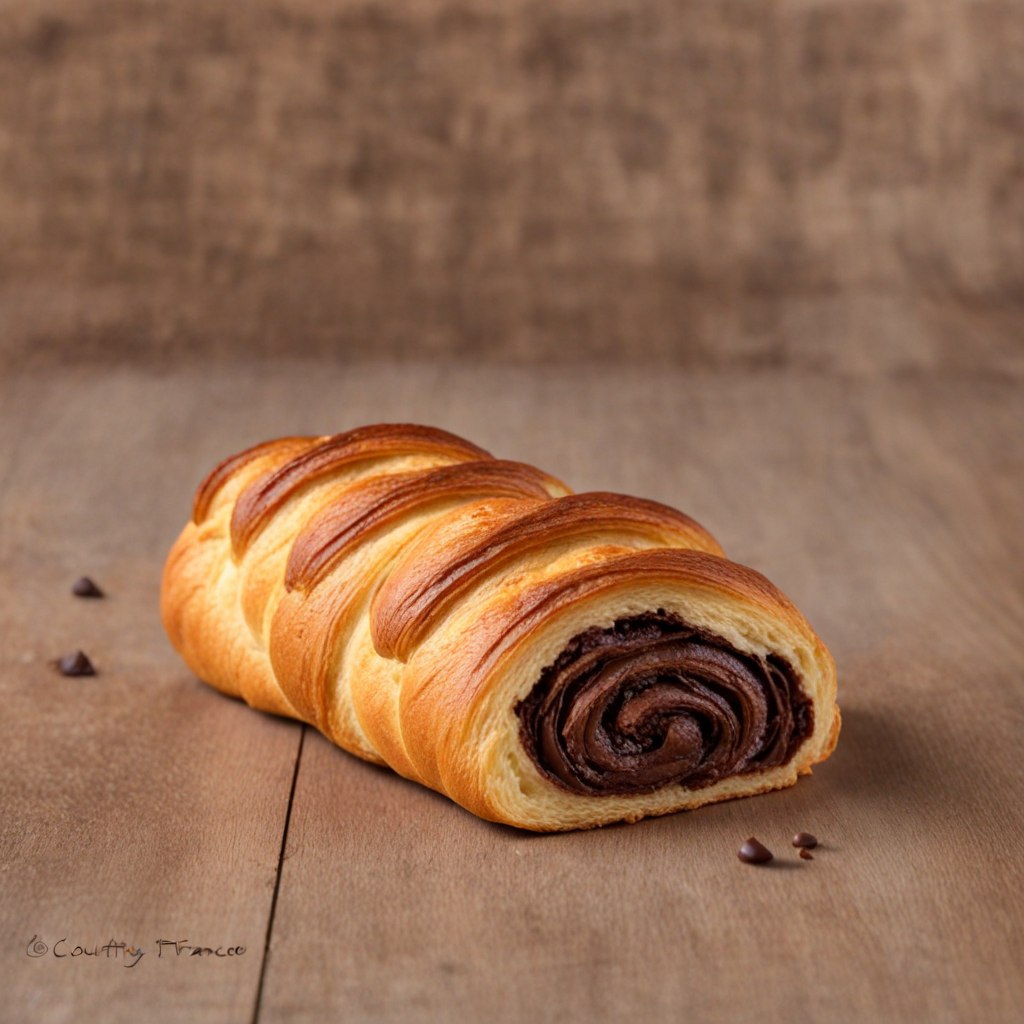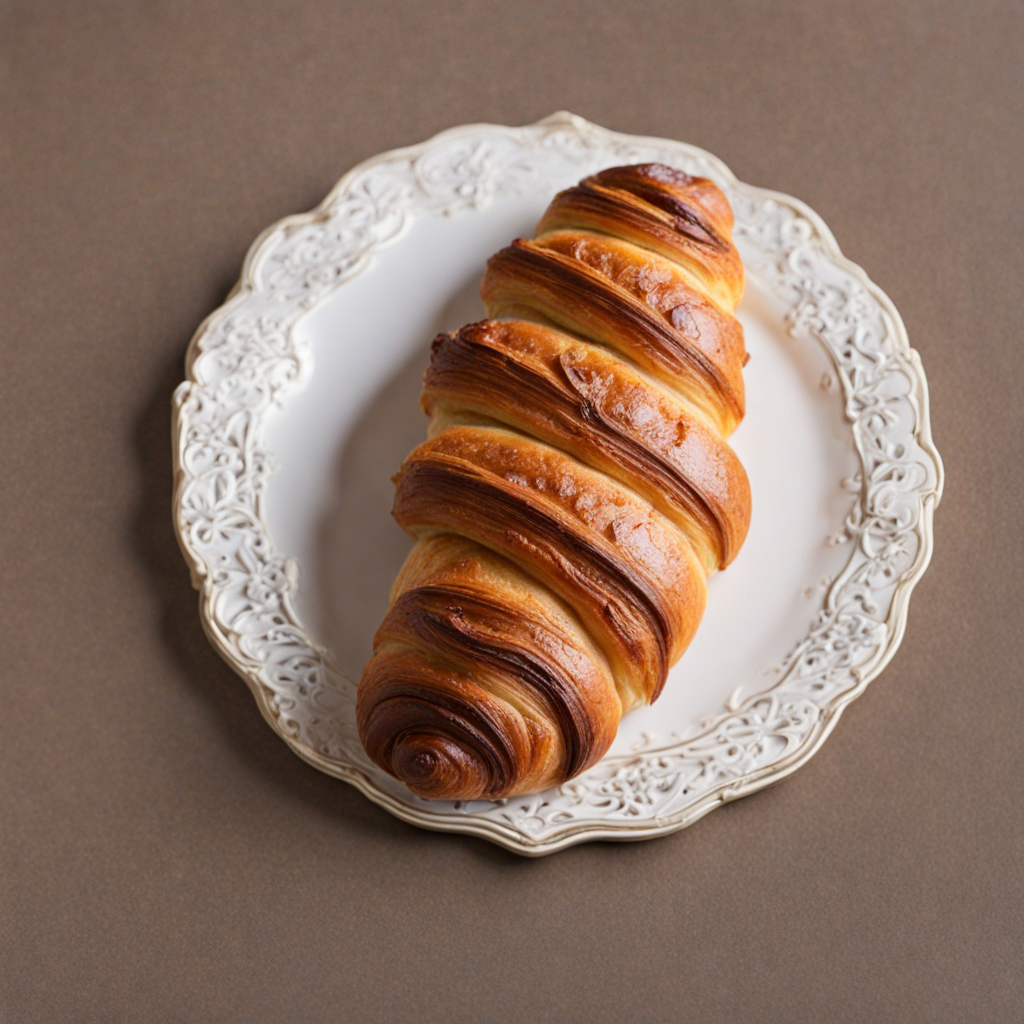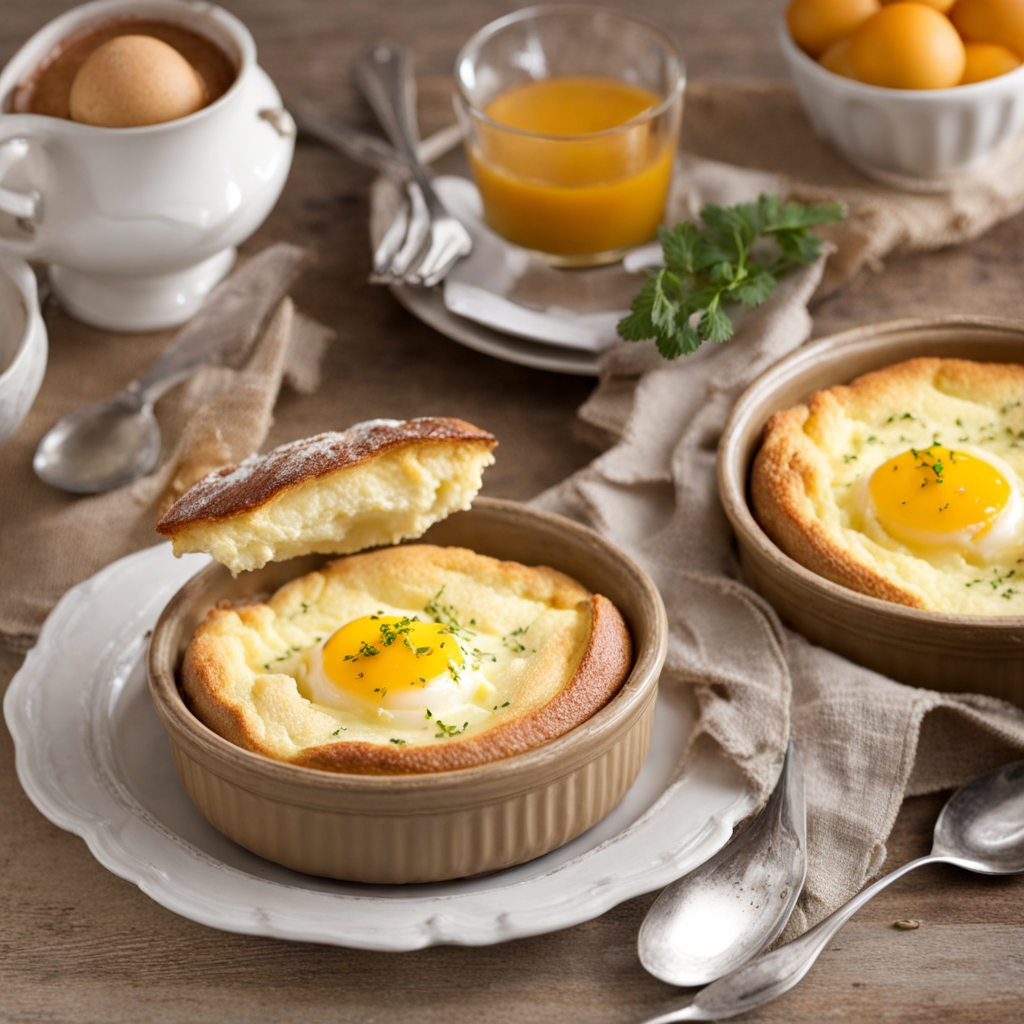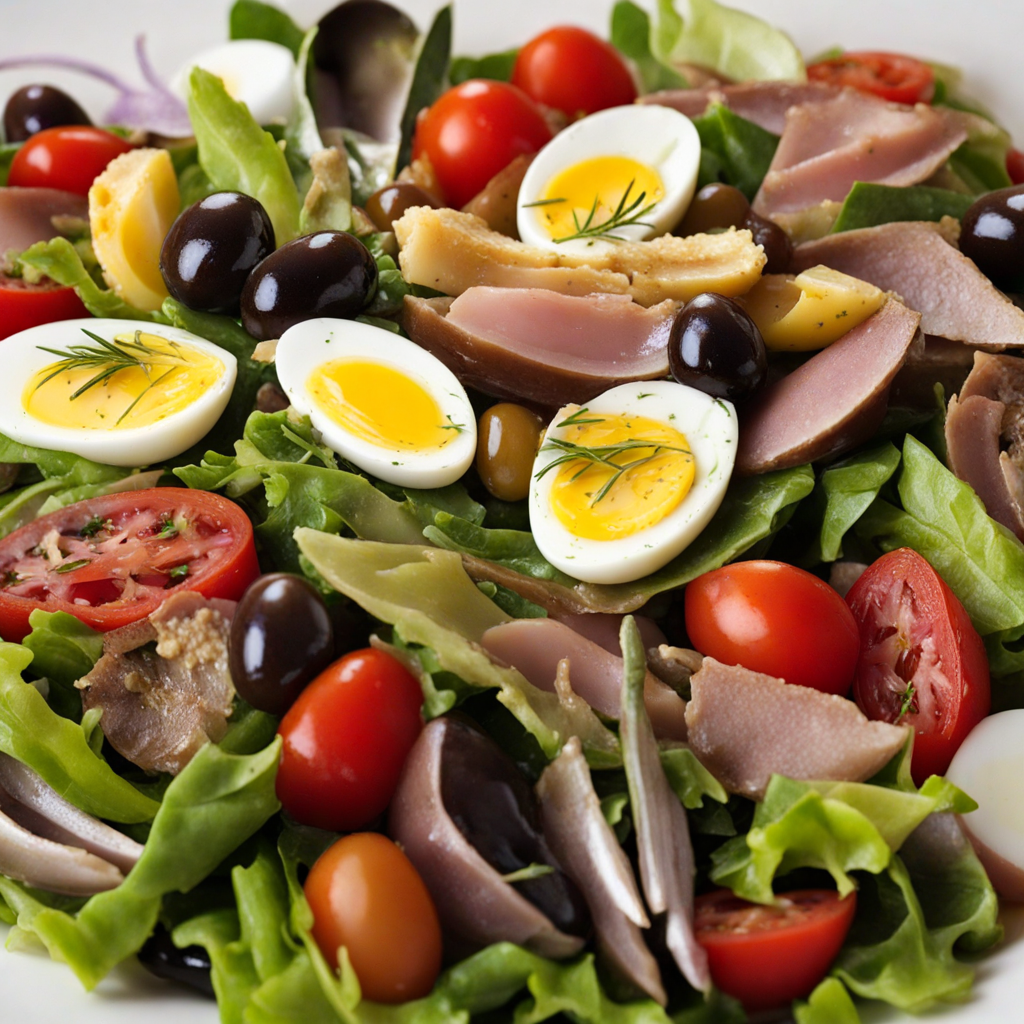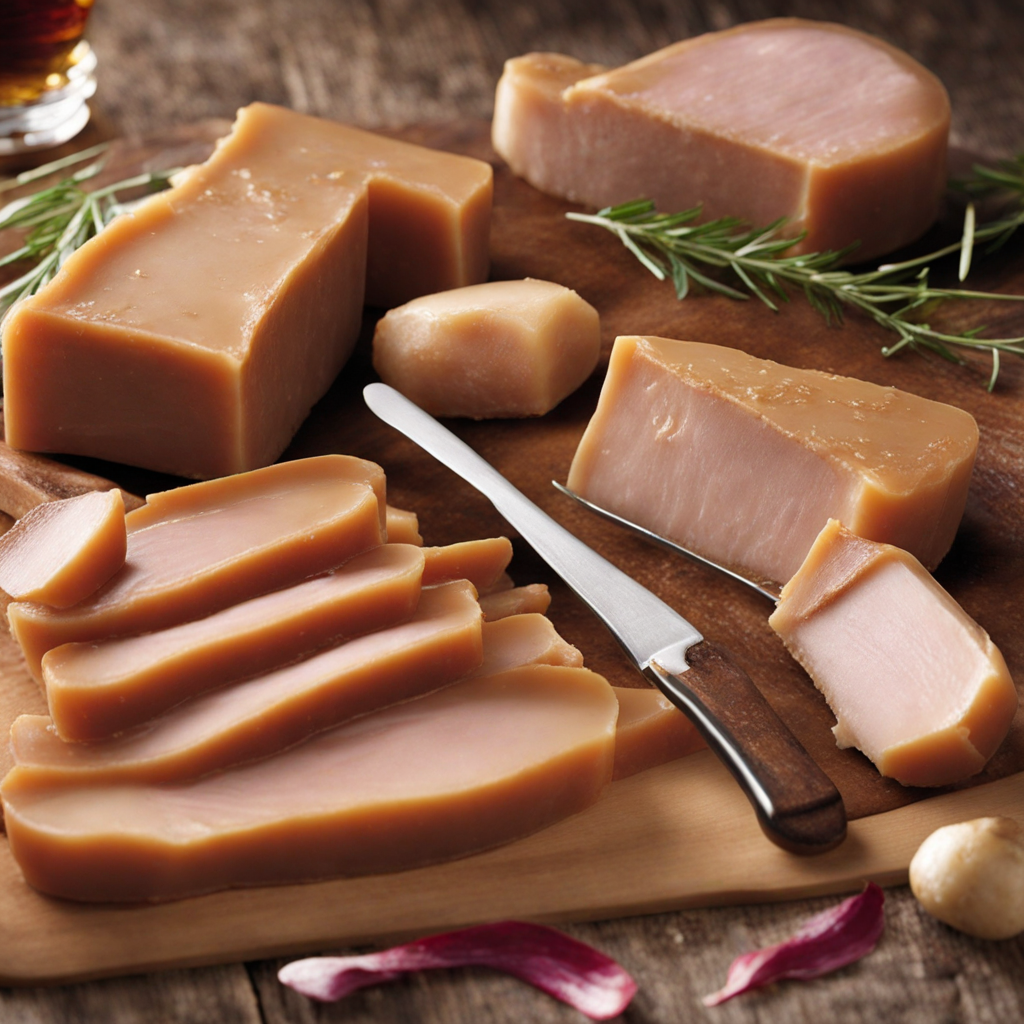Pain au Chocolat
Pain au Chocolat is a delightful French pastry that embodies the perfect blend of buttery, flaky pastry and rich chocolate, making it a beloved treat among pastry enthusiasts. This delectable treat is made from a laminated dough, which is similar to puff pastry, consisting of layers of butter and dough that create a light and airy texture. When baked, the exterior of the Pain au Chocolat turns a golden brown, providing a satisfying contrast to its soft, tender interior. As you take your first bite, the warm, crisp crust gives way to the luscious chocolate filling, often made from dark chocolate bars or chips that melt beautifully during baking. The combination of the slightly sweet and buttery pastry with the deep, rich flavor of the chocolate creates a harmonious taste experience that is both indulgent and comforting. Each mouthful offers a perfect balance of textures, from the crunchy exterior to the gooey, chocolatey center, making it an irresistible choice for breakfast or a delightful afternoon snack. Pain au Chocolat is typically enjoyed fresh from the oven, often paired with a cup of coffee or tea, enhancing its flavors and providing a quintessential French café experience. It can be found in bakeries across France, from bustling city streets in Paris to quaint village shops, each version showcasing the unique touch of the baker. Whether you're savoring it on a leisurely morning or treating yourself during a midday break, Pain au Chocolat is sure to transport you to the charming streets of France with every delectable bite.
How It Became This Dish
The Delicious Journey of Pain au Chocolat: A French Culinary Icon Origins: The Birth of a Pastry Pain au chocolat, a delectable pastry that embodies the essence of French patisserie, has a history as rich and layered as its flaky exterior. The origins of pain au chocolat can be traced back to the 19th century in France, although its roots may extend further back to the introduction of chocolate in Europe. Chocolate was first brought to Spain from the New World in the 16th century and subsequently spread across Europe, captivating palates and inspiring a world of confections. The pastry itself is believed to have evolved from the Austrian kipferl, a crescent-shaped pastry, which made its way to France through the influence of Viennese bakers. In the early 19th century, French pastry chefs began to incorporate chocolate into their creations, leading to the development of various chocolate-filled pastries. The combination of buttery, flaky dough and rich chocolate was an instant hit, and thus, pain au chocolat emerged as a beloved staple in French bakeries. The Name: A Linguistic Exploration Interestingly, the name "pain au chocolat" translates directly to "bread with chocolate." This straightforward nomenclature reflects the simplicity and accessibility of the pastry, making it a fitting treat for all social classes. In some regions of France, particularly in the southwest, the pastry is known as "chocolatine," a term that has sparked lively debates among French citizens about its proper designation. This regional variation adds to the charm and cultural significance of the pastry, as it reflects the diversity within French culinary traditions. Cultural Significance: A Symbol of French Gastronomy Pain au chocolat is not merely a pastry; it is a cultural artifact that encapsulates the French way of life. In France, breakfast is often a leisurely affair, and pain au chocolat is a quintessential component of the morning ritual. Traditionally enjoyed with a café au lait or a glass of fresh orange juice, it is a comforting start to the day. The act of visiting a local boulangerie (bakery) for freshly baked pain au chocolat is a cherished custom, fostering community ties and supporting local artisans. Beyond breakfast, pain au chocolat holds a special place in the hearts of children and adults alike. It is often a favored choice for school snacks and is synonymous with childhood memories for many French individuals. The pastry's popularity has transcended generations, making it a beloved treat for families, and it has become a symbol of indulgence that is both comforting and nostalgic. Development Over Time: From Traditional to Modern As the years went by, the evolution of pain au chocolat continued. By the late 19th and early 20th centuries, the pastry had solidified its place in French cuisine, appearing in patisseries and cafés throughout the country. The introduction of industrial baking methods in the early 20th century allowed for mass production, making pain au chocolat more accessible to the broader population. However, this shift also sparked concerns about the quality and authenticity of the pastry, leading to a renewed interest in artisanal techniques. In the latter half of the 20th century, as globalization and culinary exchange increased, the popularity of pain au chocolat began to spread beyond France’s borders. Bakeries in other countries began to replicate the recipe, adapting it to local tastes and ingredients. In the United States, for example, pain au chocolat became a staple in French-inspired bakeries, often enjoyed alongside the burgeoning café culture. This international love for pain au chocolat showcases its universal appeal, transcending language and culture. Techniques and Ingredients: Crafting the Perfect Pastry The allure of pain au chocolat lies not only in its taste but also in the craftsmanship that goes into its creation. Traditional pain au chocolat is made from a laminated dough, which involves folding layers of butter and dough together to create a flaky texture. The process is labor-intensive, requiring skill and precision to achieve the perfect balance of layers. The pastry is typically filled with high-quality dark chocolate, which melts beautifully during baking, creating a delightful contrast to the crispness of the dough. Modern bakers continue to innovate while respecting the traditional methods. Some have begun to experiment with various fillings, introducing flavors like almond paste, hazelnut chocolate, or even fruit-infused chocolates. While these variations may deviate from the classic recipe, they reflect the evolving nature of gastronomy and the willingness of bakers to explore new frontiers. Pain au Chocolat in Contemporary Culture In contemporary times, pain au chocolat has become a symbol of French culinary excellence and sophistication. It is celebrated not only in local bakeries but also in high-end patisseries, where chefs push the boundaries of creativity and presentation. The pastry has become a focal point in culinary competitions, showcasing the skill of pastry chefs and their dedication to preserving traditional techniques while embracing innovation. Social media has also played a significant role in the resurgence of interest in pain au chocolat, as food photography has allowed this beautiful pastry to shine on platforms like Instagram. The visual appeal of pain au chocolat, with its golden-brown crust and oozy chocolate filling, has made it a favorite subject for food bloggers and influencers, further spreading its fame and desirability. Conclusion: A Timeless Delight In conclusion, pain au chocolat is more than just a pastry; it is a reflection of French culture, history, and culinary artistry. From its humble beginnings to its status as a revered treat, pain au chocolat has captured the hearts and taste buds of people around the world. As we savor this delightful pastry, we celebrate not only its rich flavors but also the tradition and craftsmanship that have kept it alive for generations. Whether enjoyed in a quaint Parisian café or a bustling bakery in New York City, pain au chocolat remains a timeless delight that continues to bring joy to all who indulge in its buttery, chocolatey goodness.
You may like
Discover local flavors from France


